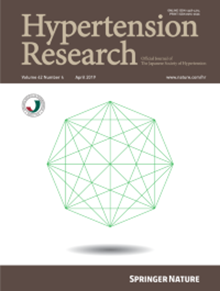Short-term pulse pressure variability: a novel prognostic marker and therapeutic target in patients with vascular Ehlers-Danlos syndrome? Preliminary results from a pilot study
IF 4.3
2区 医学
Q1 PERIPHERAL VASCULAR DISEASE
引用次数: 0
Abstract
Vascular Ehlers-Danlos syndrome (vEDS) is an inherited connective tissue disorder characterized by arterial fragility. Celiprolol is a β1-adrenoceptor antagonist with partial β2 agonist activity capable of reducing rates of vascular events in this setting, though the underlying mechanisms have yet to be elucidated. In particular, no conclusive evidence exists on its impact on blood pressure (BP) parameters in patients with vEDS. Accordingly, the aim of our study was to perform a comprehensive assessment of BP profile in a cohort of patients with vEDS receiving celiprolol titrated to the maximum tolerated dose. Consecutive outpatients with molecularly confirmed vEDS undergoing office BP measurement and 24-h ambulatory BP monitoring (ABPM) were retrospectively evaluated. Using 24-h systolic BP, diastolic BP, mean BP, and pulse pressure (PP) (mmHg) values, indices of short-term BP variability were calculated. A generalized linear regression model was applied to analyze the correlation between initial values of BP parameters and their variation with celiprolol therapy. Overall, 20 subjects were included (12 females). Eight patients (40%) had 24-h ABPM values consistent with hypertension. Five subjects (25%) defined hypertensives at 24-h ABPM had optimal BP control at office BP measurement, suggesting a “masked” hypertension. A significant correlation was found between initial values of indices of short-term PP variability and their change with celiprolol therapy, with a particularly high Pearson’s index for PP coefficient of variation (r = −0.926; p < 0.001). In patients with vEDS, 24-h ABPM is confirmed a reliable tool in identifying hypertension phenotypes. Treatment with celiprolol may reduce PP variability proportionally to its initial magnitude. Dedicated studies on larger cohorts should evaluate whether short-term PP variability is a reliable prognostic marker and therapeutic target in this clinical setting. In our study, treatment with celiprolol seemed to reduce short-term PP variability proportionally to its initial magnitude in patients with vEDS. Furthermore, two out of four patients experiencing vascular events during the study period displayed the highest short-term PP variability values recorded in the entire cohort. Further research should evaluate whether such parameters are reliable prognostic markers and therapeutic targets in this clinical setting. ABPM ambulatory blood pressure monitoring, ARV average real variability, BP blood pressure, CV coefficient of variation, DBP diastolic blood pressure, PP pulse pressure, SBP systolic blood pressure, SD standard deviation, TRI time-rate index, vEDS vascular Ehlers-Danlos syndrome.

求助全文
约1分钟内获得全文
求助全文
来源期刊

Hypertension Research
医学-外周血管病
CiteScore
7.40
自引率
16.70%
发文量
249
审稿时长
3-8 weeks
期刊介绍:
Hypertension Research is the official publication of the Japanese Society of Hypertension. The journal publishes papers reporting original clinical and experimental research that contribute to the advancement of knowledge in the field of hypertension and related cardiovascular diseases. The journal publishes Review Articles, Articles, Correspondence and Comments.
 求助内容:
求助内容: 应助结果提醒方式:
应助结果提醒方式:


